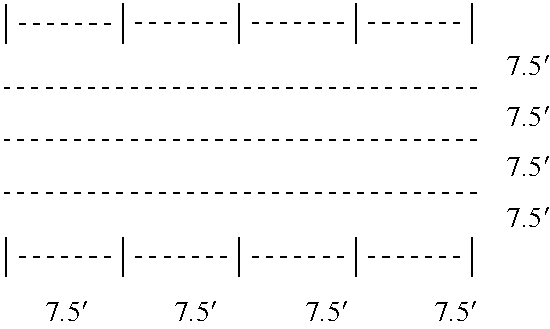Compiliable language for extracting objects from an image using a primitive image map
a technology of primitive image and language, applied in the field of reliable language for extracting objects from images using primitive image maps, can solve the problems of rarely using language for man-machine interface purposes, unable to detect the advantage of one system over the other, and unable to execute the rule set by using a computer, and can take a lot of man-hours to code by using a standard computer languag
- Summary
- Abstract
- Description
- Claims
- Application Information
AI Technical Summary
Benefits of technology
Problems solved by technology
Method used
Image
Examples
Embodiment Construction
set of images, panchromatic and near infrared, was obtained, covering the New River Inlet Quad of North Carolina. Each of the three air photos was digitized at the resolution level of 600 dots per inch, resulting in a spatial resolution of approximately 1.7 meters per pixel on a linear scale. With 60 percent overlap and 30 percent side lap between adjacent air photos, the 7.5 minute topoquad was covered by about 50 images, each being 1024 by 1024 pixels. In this format, about 200 pixels of overlap exist between adjacent cells.
For this experiment, I developed two SFIM generation systems: the first one for the panchromatic images, and the second one for the near infrared images. FIG. 9 shows an original infrared scene, and FIG. 10 its SFIM counterpart.
The above-noted SFIM generation system was developed from a sample of scenes within the total set of 55 images. I then used each system to generate 55 SFIM scenes using a totally automated mode. While each run required up to four minutes...
PUM
 Login to View More
Login to View More Abstract
Description
Claims
Application Information
 Login to View More
Login to View More - R&D
- Intellectual Property
- Life Sciences
- Materials
- Tech Scout
- Unparalleled Data Quality
- Higher Quality Content
- 60% Fewer Hallucinations
Browse by: Latest US Patents, China's latest patents, Technical Efficacy Thesaurus, Application Domain, Technology Topic, Popular Technical Reports.
© 2025 PatSnap. All rights reserved.Legal|Privacy policy|Modern Slavery Act Transparency Statement|Sitemap|About US| Contact US: help@patsnap.com



